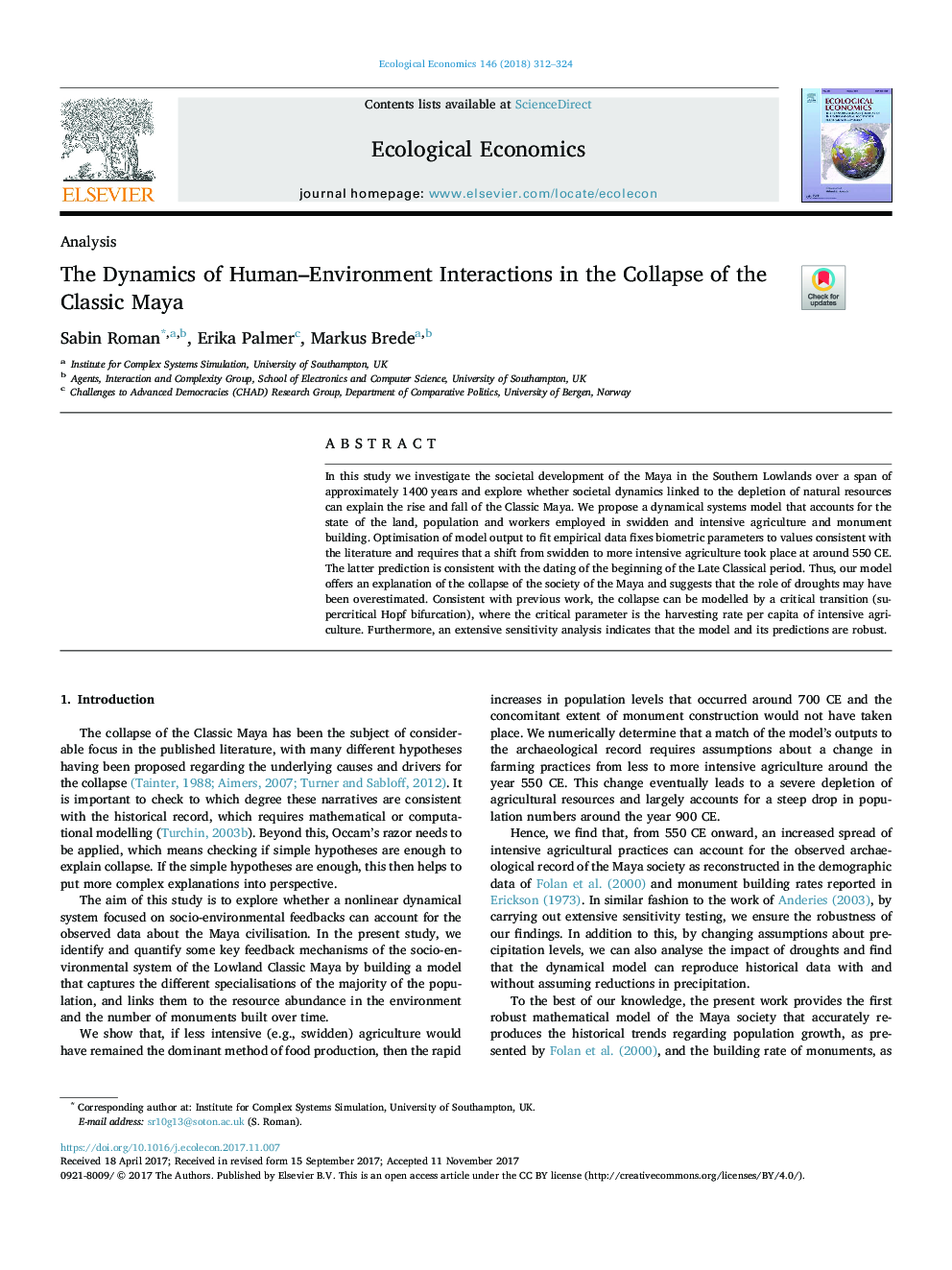| Article ID | Journal | Published Year | Pages | File Type |
|---|---|---|---|---|
| 7344573 | Ecological Economics | 2018 | 13 Pages |
Abstract
In this study we investigate the societal development of the Maya in the Southern Lowlands over a span of approximately 1400Â years and explore whether societal dynamics linked to the depletion of natural resources can explain the rise and fall of the Classic Maya. We propose a dynamical systems model that accounts for the state of the land, population and workers employed in swidden and intensive agriculture and monument building. Optimisation of model output to fit empirical data fixes biometric parameters to values consistent with the literature and requires that a shift from swidden to more intensive agriculture took place at around 550 CE. The latter prediction is consistent with the dating of the beginning of the Late Classical period. Thus, our model offers an explanation of the collapse of the society of the Maya and suggests that the role of droughts may have been overestimated. Consistent with previous work, the collapse can be modelled by a critical transition (supercritical Hopf bifurcation), where the critical parameter is the harvesting rate per capita of intensive agriculture. Furthermore, an extensive sensitivity analysis indicates that the model and its predictions are robust.
Related Topics
Life Sciences
Agricultural and Biological Sciences
Ecology, Evolution, Behavior and Systematics
Authors
Sabin Roman, Erika Palmer, Markus Brede,
